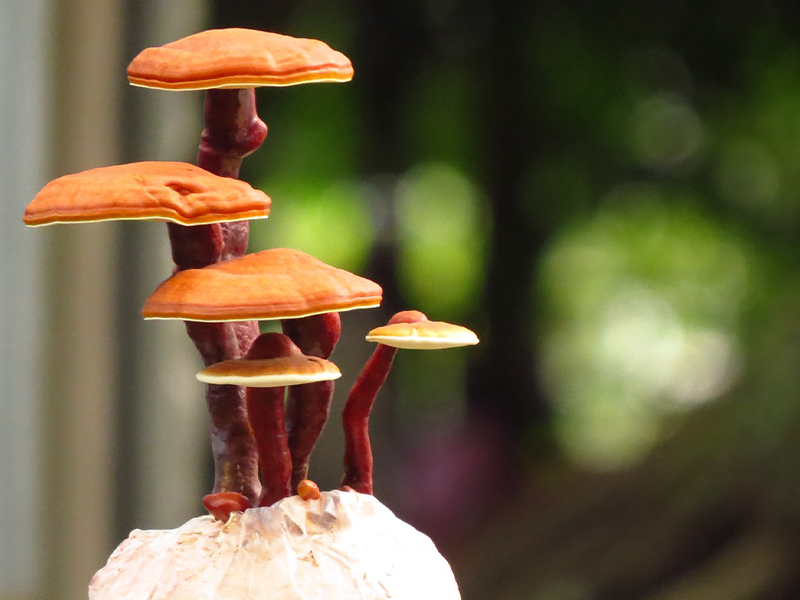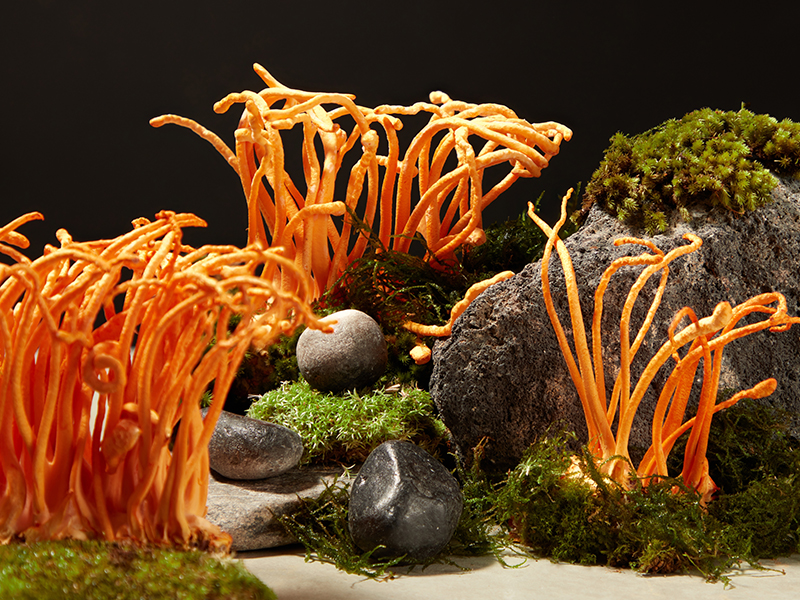
Allergy

In case of an allergy, unlike humans, where respiratory symptoms dominate, the most common symptoms in dogs are skin-related. The animal incessantly licks, bites, and scratches the affected area, and thus primarily causes the symptoms itself due to itching. So, the leading cause is itching, and as a result of continuous scratching, a variety of symptoms can be observed across the body. These often become secondarily infected, and bacteria or fungi can trigger pus-forming processes. A specific category of skin itching and inflammation is the itching and inflammation of the ear and the skin of the external ear canal.
It sometimes happens that the primary symptom in an allergic dog is respiratory, such as panting, runny nose, or tearfulness. In cats, respiratory symptoms are more common, and asthma can also occur in cats.
What causes it?
The most common cause is the reaction triggered by the saliva entering the body when bitten by an external parasite, the flea. The proteins in the saliva that are repeatedly introduced into the body cause this reaction. Pollen allergy is also common, with grass pollens, but essentially all trees and flowers also come into the crosshairs. Each has its own season. Because our dog runs around “barefoot,” it constantly comes into contact with these dangerous grass pollens, which is why the above-mentioned symptoms often appear on the thin skin between the toes. (Understandable? Not really.)
The next group of allergens is those triggered by food. It is now widely accepted that feeding chicken or chicken meat is the second strongest and most common allergen in dogs. More experienced dog owners already avoid feeding chicken. (Understandable? Not at all.)
The known contact allergies involve direct touch. These are rarer and relatively difficult to trace, usually caused by substances the dog frequently comes into contact with, such as the material of its blanket.
There is also a much rarer anaphylactic reaction based on allergies (e.g., penicillin sensitivity), which I will not address here; the following does not apply to those very rare cases.

Treatment
Before beginning treatment, we must always rule out the most common cause, which is also the easiest to address: external parasites. There are plenty of effective flea repellents available on the market, and they MUST be used. We don’t proceed further until we are sure about this.
Allergy is a grateful disease. The next step is antihistamine treatment, steroid treatment which suppresses the symptoms, the itching goes away, as a result of the veterinarian’s intervention. Glory. Temporary. It is grateful because we can be sure that the itching and with it the animal will return to the clinic.
Hypoallergenic therapeutic diets also come into the picture, we use ointments on the inflamed skin that our dog should not lick off, which is not as easy to prevent as to advise. Many types of treatments can be applied, but in the case of the underlying disease, we will definitely end up with histamine, which needs to be suppressed.
So what does flea saliva, grass pollen, and chicken meat have to do with histamine, what do they have in common, what is histamine? Histamine is produced by the body itself during inflammatory reactions. So the common factor in the aforementioned causes is that they cause inflammation in the body, which then starts to produce that nasty histamine that we fight against endlessly with the veterinarian.
The story is becoming increasingly convoluted. This is usually where content aiming to enlighten laypeople on the topic reaches—if it gets there at all. However, the key part follows here.

Our dog showing allergic symptoms has its immune system relentlessly provoked by something, to which the immune system responds with inflammation. During this process, an excessive amount of histamine is produced in the body, generally causing itching in various areas. Our dog scratches these spots until hairless, red, thinning areas appear that can easily become secondarily infected and display a variety of inflammatory symptoms, thereby necessitating the use of antibiotics, painkillers, etc.
Of course, you have to defend against constant flea bites, but a ‘barefoot’ dog should be able to cope with grass pollens just as it does with digesting chicken meat, since these have been part of its natural living conditions for millions of years.
An inflammatory reaction is the improper or overactive function of the body’s immune system. It can also be called an autoimmune reaction. Genuine autoimmune diseases are also increasingly being diagnosed independently of allergies.
Incorrect ‘lifestyle’ is behind all of this. Primarily, the dog foods that are fed be blamed for these processes. Various dog foods have not been part of the dog’s natural living conditions for centuries. An average dog food (not the cheapest today contains at least 50% grains. Dogs cannot digest grains. How? Is the majority of the fed food indigestible? No. Dogs are not equipped to digest the more complex starch molecules found in nature, so these are flaked, processed by certain industrial methods into shorter chain compounds, thus becoming ‘excellently’ digestible for dogs. Excellently?!
This is a fundamental lifestyle change. A lack of certain amino acids, lack fats, lack of exercise also contribute, as well as our polluted environment which we city dwellers also partake in, but let me reiterate: fundamentally, the long-term consumption of alien starch, THE industrially processed carbohydrates (carbohydrates: sugar, starch, cellulose) feeding can be blamed for the malfunctioning of the immune system.
Sugars and carbohydrates in the diet of dogs and wolves in the wild occur at a total of 2-4%, but definitely below 10%. They do not eat feedstuff, nor bread, rice, potatoes, or pasta, neither buckwheat, millet, chickpeas, etc. Those particular industrial processes that make otherwise indigestible carbohydrates digestible indeed trigger the immune system as well. The colorful plastic bags of dog food are never bought by the dogs, but always by the owners, with the best intentions.
As a concluding thought, it should be added that if the malfunctioning of the immune system has already developed (“we have triggered it”), a correct diet is generally not enough for recovery. The immune system needs support, and whether we like it or not, a steroid and antihistamine treatment is necessary because we cannot leave the dog with uncontrollable itching, which would drive it and its owner crazy.
With a proper diet, it is generally recommended to feed medicinal mushrooms for about half the time it took for symptoms to develop from an improper diet to achieve full recovery. Therefore, if someone has always fed their 5-year-old dog with commercial feed and now severe symptoms have developed, I estimate that with a proper diet, it can be free of steroids and medications in 3-6 months. However, for the immune system to be as “factory-new” as a well-functioning one, it might take two, two and a half years. A chronically elevated “baseline” inflammatory level, exacerbated by steroid treatments, thoroughly exhausts the immune system. An thoroughly exhausted immune system and elevated baseline inflammatory levels in the body are breeding grounds for further pathological conditions.
Author: Dr. Miklós Varga















